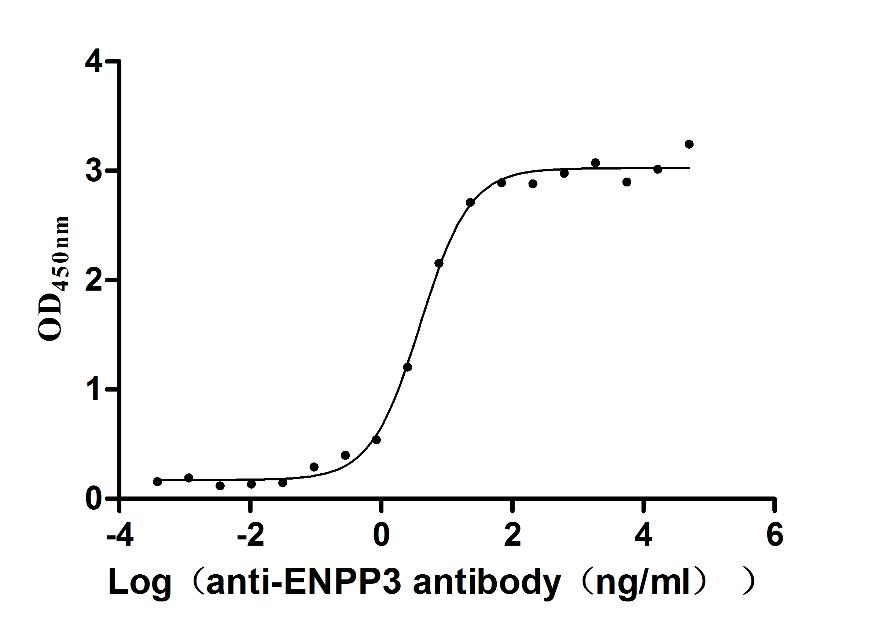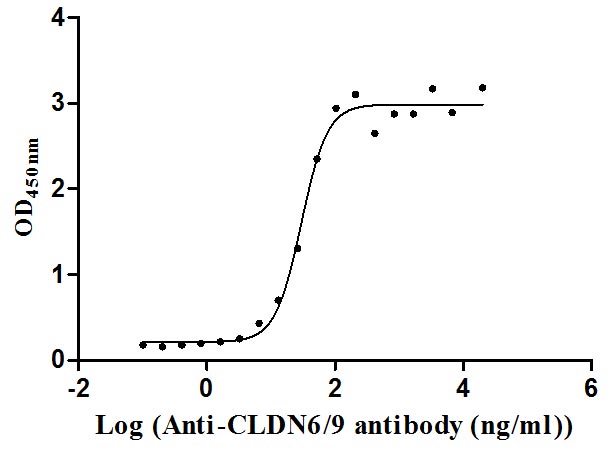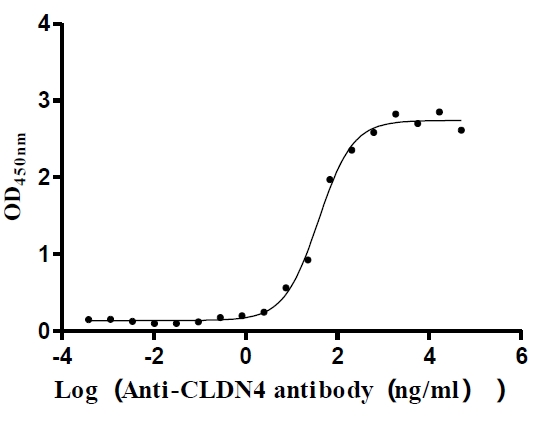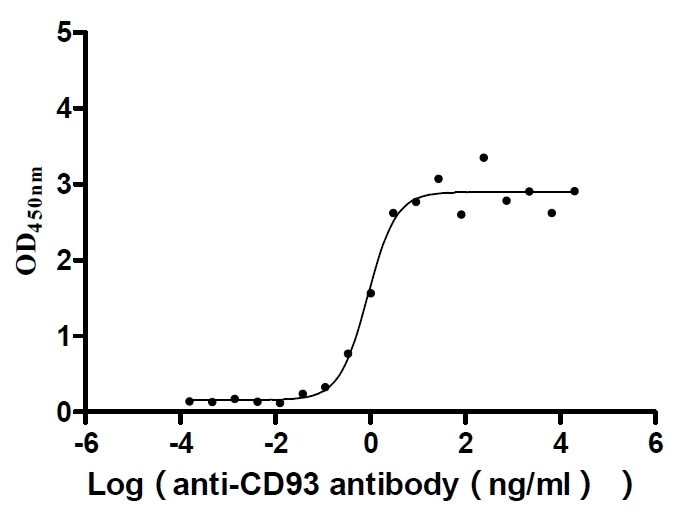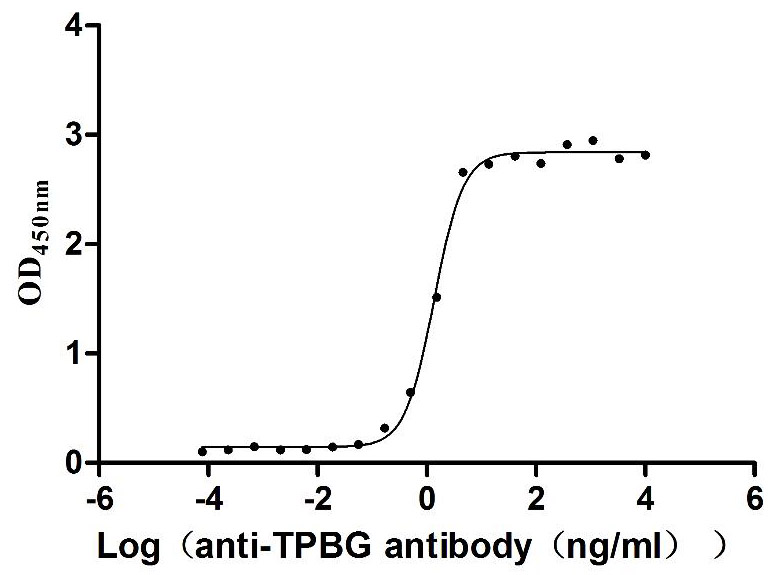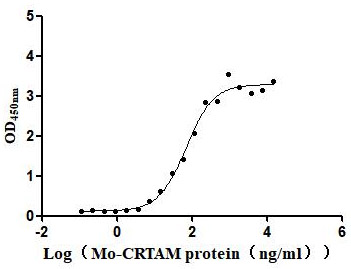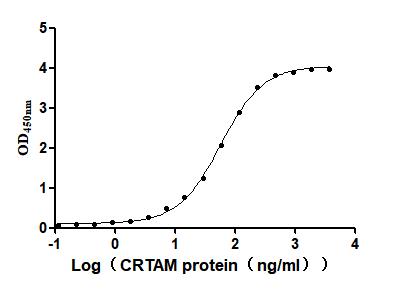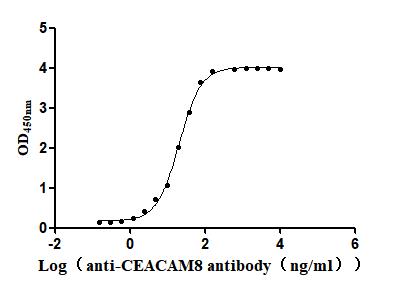Recombinant Mouse Histone acetyltransferase KAT2A (Kat2a), partial
-
中文名稱:小鼠Kat2a重組蛋白
-
貨號:CSB-YP884898MO
-
規格:
-
來源:Yeast
-
其他:
-
中文名稱:小鼠Kat2a重組蛋白
-
貨號:CSB-EP884898MO
-
規格:
-
來源:E.coli
-
其他:
-
中文名稱:小鼠Kat2a重組蛋白
-
貨號:CSB-EP884898MO-B
-
規格:
-
來源:E.coli
-
共軛:Avi-tag Biotinylated
E. coli biotin ligase (BirA) is highly specific in covalently attaching biotin to the 15 amino acid AviTag peptide. This recombinant protein was biotinylated in vivo by AviTag-BirA technology, which method is BriA catalyzes amide linkage between the biotin and the specific lysine of the AviTag.
-
其他:
-
中文名稱:小鼠Kat2a重組蛋白
-
貨號:CSB-BP884898MO
-
規格:
-
來源:Baculovirus
-
其他:
-
中文名稱:小鼠Kat2a重組蛋白
-
貨號:CSB-MP884898MO
-
規格:
-
來源:Mammalian cell
-
其他:
產品詳情
-
純度:>85% (SDS-PAGE)
-
基因名:
-
Uniprot No.:
-
別名:Kat2a; Gcn5l2; Histone acetyltransferase KAT2A; EC 2.3.1.48; General control of amino acid synthesis protein 5-like 2; Histone acetyltransferase GCN5; MmGCN5; Histone glutaryltransferase KAT2A; EC 2.3.1.-; Histone succinyltransferase KAT2A; EC 2.3.1.-; Lysine acetyltransferase 2A
-
種屬:Mus musculus (Mouse)
-
蛋白長度:Partial
-
蛋白標簽:Tag?type?will?be?determined?during?the?manufacturing?process.
The tag type will be determined during production process. If you have specified tag type, please tell us and we will develop the specified tag preferentially. -
產品提供形式:Lyophilized powder
Note: We will preferentially ship the format that we have in stock, however, if you have any special requirement for the format, please remark your requirement when placing the order, we will prepare according to your demand. -
復溶:We recommend that this vial be briefly centrifuged prior to opening to bring the contents to the bottom. Please reconstitute protein in deionized sterile water to a concentration of 0.1-1.0 mg/mL.We recommend to add 5-50% of glycerol (final concentration) and aliquot for long-term storage at -20℃/-80℃. Our default final concentration of glycerol is 50%. Customers could use it as reference.
-
儲存條件:Store at -20°C/-80°C upon receipt, aliquoting is necessary for mutiple use. Avoid repeated freeze-thaw cycles.
-
保質期:The shelf life is related to many factors, storage state, buffer ingredients, storage temperature and the stability of the protein itself.
Generally, the shelf life of liquid form is 6 months at -20°C/-80°C. The shelf life of lyophilized form is 12 months at -20°C/-80°C. -
貨期:Delivery time may differ from different purchasing way or location, please kindly consult your local distributors for specific delivery time.Note: All of our proteins are default shipped with normal blue ice packs, if you request to ship with dry ice, please communicate with us in advance and extra fees will be charged.
-
注意事項:Repeated freezing and thawing is not recommended. Store working aliquots at 4°C for up to one week.
-
Datasheet :Please contact us to get it.
靶點詳情
-
功能:Protein lysine acyltransferase that can act as a acetyltransferase, glutaryltransferase or succinyltransferase, depending on the context. Acts as a histone lysine succinyltransferase: catalyzes succinylation of histone H3 on 'Lys-79' (H3K79succ), with a maximum frequency around the transcription start sites of genes. Succinylation of histones gives a specific tag for epigenetic transcription activation. Association with the 2-oxoglutarate dehydrogenase complex, which provides succinyl-CoA, is required for histone succinylation. In different complexes, functions either as an acetyltransferase (HAT) or as a succinyltransferase: in the SAGA and ATAC complexes, acts as a histone acetyltransferase. Has significant histone acetyltransferase activity with core histones, but not with nucleosome core particles. Acetylation of histones gives a specific tag for epigenetic transcription activation. Recruited by the XPC complex at promoters, where it specifically mediates acetylation of histone variant H2A.Z.1/H2A.Z, thereby promoting expression of target genes. Involved in long-term memory consolidation and synaptic plasticity: acts by promoting expression of a hippocampal gene expression network linked to neuroactive receptor signaling. Acts as a positive regulator of T-cell activation: upon TCR stimulation, recruited to the IL2 promoter following interaction with NFATC2 and catalyzes acetylation of histone H3 at 'Lys-9' (H3K9ac), leading to promote IL2 expression. Required for growth and differentiation of craniofacial cartilage and bone by regulating acetylation of histone H3 at 'Lys-9' (H3K9ac). Regulates embryonic stem cell (ESC) pluripotency and differentiation. Also acetylates non-histone proteins, such as CEBPB, PLK4 and TBX5. Involved in heart and limb development by mediating acetylation of TBX5, acetylation regulating nucleocytoplasmic shuttling of TBX5. Acts as a negative regulator of centrosome amplification by mediating acetylation of PLK4. Also acts as a histone glutaryltransferase: catalyzes glutarylation of histone H4 on 'Lys-91' (H4K91glu), a mark that destabilizes nucleosomes by promoting dissociation of the H2A-H2B dimers from nucleosomes.
-
基因功能參考文獻:
- These findings established a link between GCN5 and the FGF signaling pathway and highlighted specific GCN5-MYC partnerships in gene regulation during early differentiation. PMID: 29249668
- Sumoylation of RORgammaT regulates TH17 differentiation and thymocyte development via histone acetyltransferase KAT2A, which stabilizes the binding of SRC1 to enhance RORgammaT transcription factor activity. PMID: 30451821
- Gcn5 regulates Hoxc11 gene expression through mediating site-specific H3K9 acetylation in Akt1-/- MEFs. PMID: 28541373
- recovering GCN5 expression in vivo by lentiviral expression vector significantly attenuated the loss of angiogenesis in ovariectomized mouse femurs PMID: 28642327
- study reveals previously unknown physiological functions for Gcn5 and a molecular mechanism underlying these functions in regulating T cell immunity; Gcn5 may be an important new target for autoimmune disease therapy PMID: 28424240
- Together, our experiments identify a novel nonhistone substrate of GCN5, highlight an essential role for both GCN5 and RA signaling in early diencephalic development, and elucidate a novel molecular regulatory mechanism for RA signaling that is specific to the developing forebrain. PMID: 28154153
- Methionine was the only essential amino acid that rapidly induced PGC-1alpha acetylation through activating the GCN5 acetyltransferase. PMID: 27022023
- these results may point to the GCN5-NF-kappaB pathway as a novel potential molecular target for stem cell mediated regenerative medicine and the treatment of metabolic bone diseases such as osteoporosis. PMID: 26420353
- In addition to reducing atrogene expression, surprisingly inhibiting NF-kappaB with IkappaBalpha-SR or by GCN5 knockdown in these muscles also enhanced AKT and mechanistic target of rapamycin (mTOR) activities, which also contributed to the reduction in atrophy. PMID: 26515065
- Gcn5 and PCAF repress IFN-beta production in an enzymatic activity-independent and non-transcriptional manner: by inhibiting the innate immune signaling kinase TBK1 in the cytoplasm. PMID: 25269644
- GCN5 and HDAC1 are the crucial enzymes that regulating epigenetic reprogramming; we observed dynamic changes in the expression levels of GCN5 and HDAC1 during embryo development PMID: 23888963
- Our data establish Kat2a as a novel and essential regulator of hippocampal memory consolidation. PMID: 25024434
- Study reveals that Gcn5/PCAF facilitate adipogenesis through regulation of PPARgamma expression and regulate brown adipogenesis by influencing Prdm16 expression. PMID: 25071153
- In conclusion, these data establish Kat2a as a novel and essential regulator of hippocampal memory consolidation. PMID: 25024434
- Sirt6 interacts with and modifies GCN5, enhancing GCN5's activity. PMID: 23142079
- Data support a model in which p23 and GCN5 regulate diverse multistep pathways by controlling the longevity of protein-DNA complexes. PMID: 23022381
- Data have defined an important role for GCN5 in NSC and provided evidence that GCN5 is an important Myc transcriptional cofactor in vivo. PMID: 22745758
- In the absence of PU.1, there is decreased association of Gcn5 and p300/CBP associated factor and increased association of histone deacetylases at the interleukin (Il)9 locus in T helper (Th)9 cells. PMID: 22904310
- GCN5 as a new negative regulator of transactivation by E1A and suggest that its KAT activity is required for optimal virus replication. PMID: 22623781
- findings demonstrate that loss of Gcn5 functions can contribute to the time of onset and severity of SCA7 phenotypes, and suggest that non-transcriptional functions of SAGA may play a role in neurodegeneration in this disease PMID: 22002997
- SIRT1 deacetylase activity is not required for exercise-induced deacetylation of PGC-1alpha or mitochondrial biogenesis in skeletal muscle; changes in GCN5 acetyltransferase activity may be an important regulator of PGC-1alpha activity after exercise PMID: 21757760
- Results showed that in -vitro culture environments could inhibit GCN5 expression and decrease the expression of HDAC1 in mouse preimplantation embryos, which might affect the correct embryonic gene expression. PMID: 16416968
- Gcn5 has important, histone acetyltransferase-independent functions in early development PMID: 17325035
- Gcn5 may be required to maintain pluripotent states PMID: 17440986
- Results indicate that normal levels of Gcn5 expression are critical for neural tube closure in mice and predict that mutations in Gcn5 may be associated with increased risk of neural tube defects in humans. PMID: 18330926
- p300 acts as a critical coactivator of FXR induction of SHP by acetylating histones at the promoter and FXR itself PMID: 18842595
顯示更多
收起更多
-
亞細胞定位:Nucleus. Chromosome. Cytoplasm, cytoskeleton, microtubule organizing center, centrosome.
-
蛋白家族:Acetyltransferase family, GCN5 subfamily
-
組織特異性:In brain, highly expressed in the hippocampal CA1 region (at protein level). Also expressed in the hippocampal subregions CA3 and the dentate gyrus as well as in the cortex and prefrontal cortex. Expressed at low level in the cerebellum.
-
數據庫鏈接:
Most popular with customers
-
Express system: Mammalian cell
Species: Macaca fascicularis (Crab-eating macaque) (Cynomolgus monkey)
-
Recombinant Human Claudin-9 (CLDN9)-VLPs (Active)
Express system: Mammalian cell
Species: Homo sapiens (Human)
-
Recombinant Human Claudin-4 (CLDN4)-VLPs (Active)
Express system: Mammalian cell
Species: Homo sapiens (Human)
-
Recombinant Human Complement component C1q receptor (CD93), partial (Active)
Express system: Mammalian cell
Species: Homo sapiens (Human)
-
Recombinant Human Trophoblast glycoprotein (TPBG), partial (Active)
Express system: Mammalian cell
Species: Homo sapiens (Human)
-
Recombinant Mouse Cell adhesion molecule 1 (Cadm1), partial (Active)
Express system: Mammalian cell
Species: Mus musculus (Mouse)
-
Recombinant Mouse Cytotoxic and regulatory T-cell molecule (Crtam), partial (Active)
Express system: Mammalian cell
Species: Mus musculus (Mouse)
-
Recombinant Human Carcinoembryonic antigen-related cell adhesion molecule 8(CEACAM8) (Active)
Express system: Mammalian cell
Species: Homo sapiens (Human)


